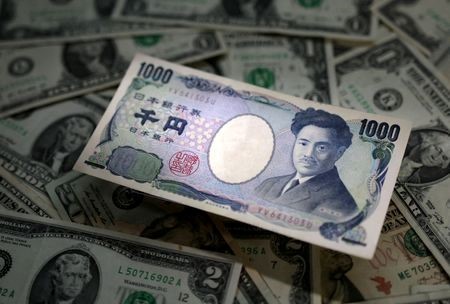




Quarterly Economic Growth Release: Stronger case for a BSP cut in August
 DOWNLOAD
DOWNLOAD

Inflation Update: BSP’s low-inflation safety net
 DOWNLOAD
DOWNLOAD

Monthly Economic Update: Two more BSP cuts
 DOWNLOAD
DOWNLOAD


TOP SEARCHES
Funds lift short yen position to second largest ever: McGeever

ORLANDO, Florida – Hedge funds’ collective bet against the Japanese yen has mushroomed to the second largest ever, further evidence that while economic fundamentals are behind the currency’s extraordinary fall to 34-year lows against the dollar, so too is speculative trading.
Japanese authorities have repeatedly vowed to take “decisive action” against speculative activity, and on Monday morning they appeared to finally intervene after the yen slumped to 160.00 per dollar, a level last seen in 1990.
Commodity Futures Trading Commission data that shows speculators’ largest net short yen position since June 2007, and the second biggest since yen futures contracts were launched in 1986, is already probably out of date.
The figures are for the week through April 23 and the yen has fallen another 3% since then, most of that following the Bank of Japan’s April 26 policy decision. The short yen position for the week to April 30 will almost certainly be a new record.
As it is, in the week through April 23 CFTC funds increased their net short yen position to 179,919 contracts. The only bigger net short position since CFTC yen futures were launched in the mid-1980s was the 188,077 contracts in June 2007.
A long position is essentially a bet that an asset will rise in value, and a short position is a wager its price will fall.
Funds’ net short yen position in the first week of January was just 55,949 contracts. They have increased it in 13 of the 16 weeks this year, and it has almost doubled in size in the last six weeks.
Some observers would argue that looks a lot like speculative activity, and there is little doubt that CFTC funds’ positions are deep in extreme territory.
USD 36-BILLION DOLLAR BET
Does the Ministry of Finance agree? It appears so, now that the dollar briefly breached 160.00 yen in early Monday trade in Asia – Japan is closed for a public holiday – sparking a rapid recovery to 155.00 per dollar.
The effectiveness of any intervention beyond an immediate yen bounce, however, remains to be seen.
“Given the fundamental backdrop, which is likely to be reinforced (this week) by FOMC and US labor data, intervention flushes are merely a means of unwinding excess positioning and providing some two-way risk for markets,” Westpac analysts wrote on Sunday.
In dollar terms, CFTC funds’ position is a USD 14.5 billion leveraged bet against the yen, the largest since November 2017. That accounts for 40% of their aggregate USD 36.3 billion net long dollar position against G10 currencies, the most bullish bet on the greenback since May 2019.
Earlier this month, funds’ yen position accounted for around 60% of their overall long dollar position against G10 currencies, so they are expressing their increasingly bullish dollar view against a wider range of currencies.
The CFTC data for the week to April 23 show that funds were net short of euros to the tune of almost 10,000 contracts, the first net short position since September 2022.
Perhaps even more remarkable was the move against sterling. Funds swung to a net short of 26,233 contracts – the first net short since November – from a long of 8,619 contracts the week before.
That swing of almost 35,000 contracts was the biggest bearish shift in a single week since December 2007 and the fourth largest ever.
Yen bets and the broader dollar position are getting stretched. Momentum is strong, but a reversal must surely be closer.
(The opinions expressed here are those of the author, a columnist for Reuters)
(By Jamie McGeever; Editing by Jacqueline Wong)
This article originally appeared on reuters.com





 By Reuters
By Reuters